Page Contents
Forget diet, exercise, increase height programs, a-grow-bics and any other doubtful or marginal grow taller methods out there. The only surefire method for getting taller is leg lengthening surgery.
However, the process is long, arduous, extremely painful, and expensive with a high risk of possible complications.

What is leg lengthening surgery?
Leg lengthening surgery is a surgical procedure where the doctor breaks your shin bones and insert a lengthening rod.
The rods then gradually pull the bones apart as new bone, nerves, muscle, skin, and blood vessels grow and fill up the gap.
The rods pull the bones slowly (1 mm per day) so the bone continues to grow.
The whole lengthening process takes about three months followed by three to six months of demanding physical therapy.
Recovery and pain management
The entire limb lengthening surgery procedure is very painful so proper pain management is important.
Unfortunately, anti-inflammatory drugs slow bone growth. This means very little pain medication can be taken.
This means that you have to endure it with minimum pain medication.
Because of minimal pain medication, physical therapy is very painful, to the point where patients may give up.
However, omitting it could lengthen recovery by two or three times the normal duration of 3 to 6 months. It could also prevent the bone from strengthening enough so it may break shortly after.
Getting enough sleep is essential to bone growth and recovery. But this can be difficult due to the pain and discomfort.
Sleeping pills may work initially but they are not long-term solutions as they can cause drug dependency.
Risks and complications
As with any surgical procedure, there are significant risks.
The risks are relatively high for a leg-lengthening surgery at about 25%.
Potential risks include bone infection, injury to nerves/blood vessels, injury to muscles/tendons, poor bone healing, and unequal lengthening.
But contrary to a lot of the hype, major long term complications are not common. Some studies have found a low risk of long term negative effects and insist the procedure is safe (1).
Most common leg lengthening surgery procedures:
1) Ilizarov apparatus for limb lengthening
Orthopedic surgeon, Gavriil Abramovich Ilizarov from the Soviet Union pioneered the Ilizarov apparatus in the 1950s.
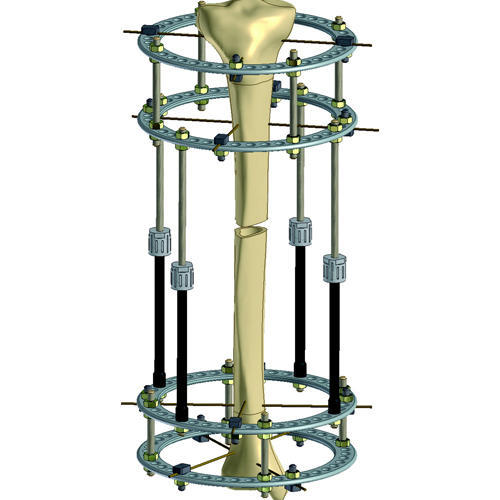
This is the most common method of limb lengthening used today. It uses external fixtures to allow the bone to heal and join together properly. Its biggest advantage is its stability and ability to treat complex fractures (2).
2) PRECISE remote-controlled leg limb lengthening system
The PRECISE system was developed by Ellipse Technologies who recently was given FDA approval to market this system.
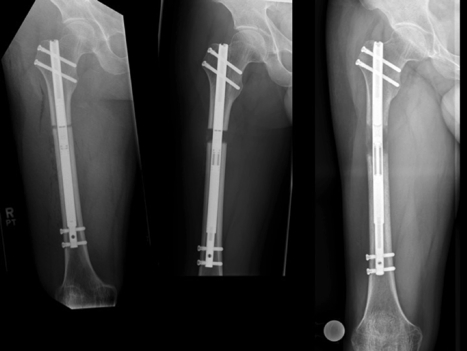
The magnetic actuator is then surgically implanted into the bones. Additionally, an external remote controller (ERC) is placed on the skin. It activates the magnetic system to lengthen the rods (3).
3) Fitbone
Fitbone is the world’s only electromechanical device that is implanted directly into the bone for lengthening.

The bones are cut and the lengthening nail is implanted directly into the bone marrow. The lengthening nail is connected to an induction receiver that is also implanted inside the leg.
An external device powers the nail through the induction plate, lengthening the nail. This method is well-documented in helping doctors correct bone deformities (4).
4) Intramedullary Skeletal Kinetic Distractor (ISKD)
Dr. Dean Cole, medical director of the Florida Hospital, Orthopaedic Institute, Fracture Care Center, invented the ISKD. This is one of the few centers in the US that performs bone lengthening surgery for cosmetic reasons.
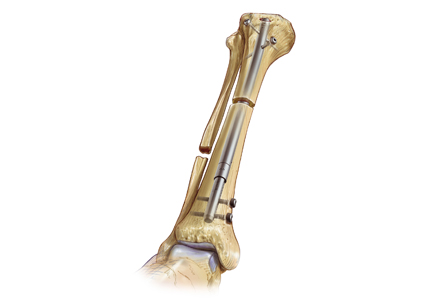
The ISKD device uses a kinetic clutch mechanism that is screwed onto the top and bottom portions of the bone being lengthened (5). When the patient rotates the leg, the clutch mechanism rotates like a screw and lengthens the bone. The clutch mechanism also ensures that the rod rotates only in one direction.
5) Lengthening Over Nails (LON)
Dr. Paley and Dr. Herzenberg at the Maryland Center for Limb Lengthening & Reconstruction (MCLLR) pioneered Lengthening over nails (LON).
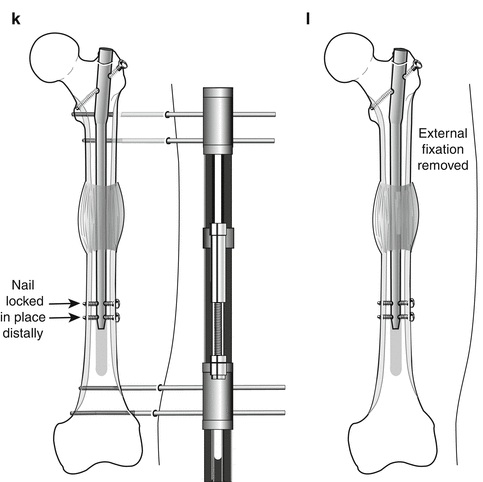
The bone is implanted with a metal rod. Additionally, an external fixator attached to the bone from the outside. The external fixator pulls the bones apart, while the bone slides over the rod and new bone growth around it.
The external fixator is removed after the full lengthening of the bone. The rod is then attached to the bone for the next strengthening phase which is followed by the removal of the rods.
In comparison to Ilizarov lengthening, LON provides faster lengthening and fewer complications (6).
6) Micro-wound
Dr. Helong Bai (Chongqing, China) developed this process.
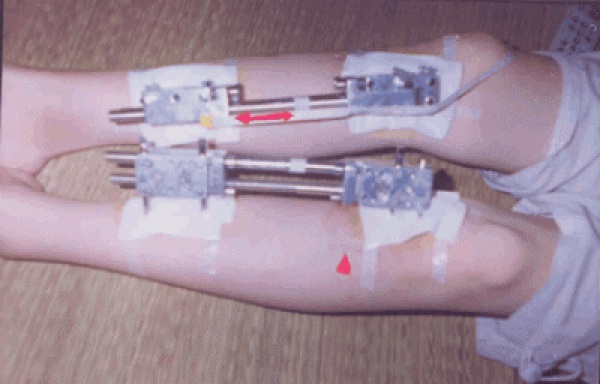
It uses a fixator clip instead of an Ilizarov fixator device and covers just one side of the leg and is much more comfortable than the Ilizarov fixator that completely covers the leg.
It attaches to the outside of the leg throughout the limb lengthening procedure and works similarly to the LON method.
7) Salamehfix (SLDF)
Professor Ghassan Salameh from Syria developed the SLDF system which is a hinged external fixator device.
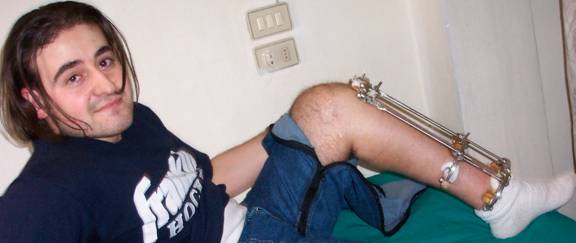
It has three small arcs instead of the circular system of the Ilizarov fixator device. Since the arcs are of different size, it can conform to the size and shape of the leg and so can be worn under clothing.
It positions the screws to minimize pain while providing stable fixation and allows for early weight-bearing.
8) Bliskunov’s method
Bliskunov’s method was developed by Professor Alexander Bliskunov.
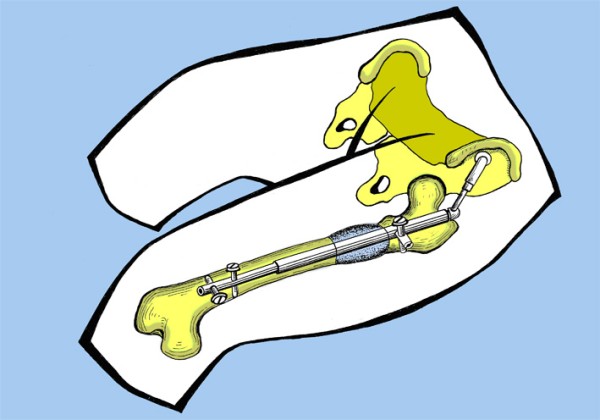
It comprises a telescoping rod inserted into the bones. The patient makes certain leg movements that activate the rod to telescope, thus lengthening the bones (7).
So should you get leg lengthening surgery?
Leg lengthening costs around $85,000 in the US but significantly less abroad.
You can get it for around $15,000 ~$30,000 in China, Russia, India, Egypt, or Brazil. But would you ever go to India or Egypt, or even China for a major, life-changing procedure such as this?
Also, you will probably need 1 year of expenses because you will probably be unable to work during this time.
This will mean dealing with one year of bed and wheelchair ridden, extremely painful, and unproductive time.
However, for some people, a height gain of 3 inches is worth all this trouble.
Do you have at least $100,000 and a year, along with the will to deal with extreme pain, physical therapy, and recovery?
Are you willing to accept a method of getting taller with a significant risk of complication?
If so, you may be ready to consider leg lengthening surgery.